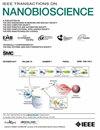用于递送双氯芬酸钠的 pH 响应性金属有机框架的绿色合成。
IF 3.7
4区 生物学
Q1 BIOCHEMICAL RESEARCH METHODS
引用次数: 0
摘要
本研究通过基于绿色化学的方法合成了一种名为 Asp-Cu 的生物友好型金属有机框架(bio-MOF),其中包括铜离子和环境友好型分子 L(+)- 天冬氨酸(Asp),从而开发出一种药物输送系统。首次将双氯芬酸钠(DS)同时负载到合成的生物有机框架上。然后,通过用海藻酸钠(SA)对其进行封装,提高了该系统的效率。FT-IR、SEM、BET、TGA 和 XRD 分析证实,DS@Cu-ASP 已成功合成。在使用模拟胃介质时,DS@Asp-Cu 在 2 小时内释放了总负荷。通过在 DS@Cu-ASP 上涂覆 SA(SA@DS@Cu-ASP),克服了这一难题。在 pH 值为 1.2 时,SA@DS@Cu-ASP 的药物释放量有限,而在 pH 值为 6.8 和 7.4 时,由于 SA 的 pH 响应特性,药物释放量的比例较高。体外细胞毒性筛选表明,SA@DS@Cu-ASP 是一种合适的生物相容性载体,细胞存活率大于 90%。据观察,该药物载体具有更高的生物相容性、更低的毒性、足够的负载特性和响应性,表明其可作为一种可行的控释药物载体。本文章由计算机程序翻译,如有差异,请以英文原文为准。
Green Synthesis of pH-Responsive Metal–Organic Frameworks for Delivery of Diclofenac Sodium
The current study developed a drug delivery system through the green chemistry-based synthesis of a biologically friendly metal-organic framework (bio-MOF) called Asp-Cu, which included copper ions and the environmentally friendly molecule L(+)-aspartic acid (Asp). For the first time, diclofenac sodium (DS) was loaded onto the synthesized bio-MOF simultaneously. The system’s efficiency was then improved by encapsulating it with sodium alginate (SA). FT-IR, SEM, BET, TGA, and XRD analyses confirmed that DS@Cu-ASP was successfully synthesized. DS@Asp-Cu was found to release the total load within 2 h when used with simulated stomach media. This challenge was overcome by coating DS@Cu-ASP with SA (SA@DS@Cu-ASP). SA@DS@Cu-ASP displayed limited drug release at pH 1.2, and a higher percentage of the drug was released at pH 6.8 and 7.4 due to the pH-responsive nature of SA.
$I\textit {n vitro}$
cytotoxicity screening showed that SA@DS@Cu-ASP could be an appropriate biocompatible carrier with >90% cell viability. The on-command drug carrier was observed to be more applicable biocompatible with lower toxicity, as well as adequate loading properties and responsiveness, indicating its applicability as a feasible drug carrier with controlled release.
求助全文
通过发布文献求助,成功后即可免费获取论文全文。
去求助
来源期刊

IEEE Transactions on NanoBioscience
工程技术-纳米科技
CiteScore
7.00
自引率
5.10%
发文量
197
审稿时长
>12 weeks
期刊介绍:
The IEEE Transactions on NanoBioscience reports on original, innovative and interdisciplinary work on all aspects of molecular systems, cellular systems, and tissues (including molecular electronics). Topics covered in the journal focus on a broad spectrum of aspects, both on foundations and on applications. Specifically, methods and techniques, experimental aspects, design and implementation, instrumentation and laboratory equipment, clinical aspects, hardware and software data acquisition and analysis and computer based modelling are covered (based on traditional or high performance computing - parallel computers or computer networks).
 求助内容:
求助内容: 应助结果提醒方式:
应助结果提醒方式:


